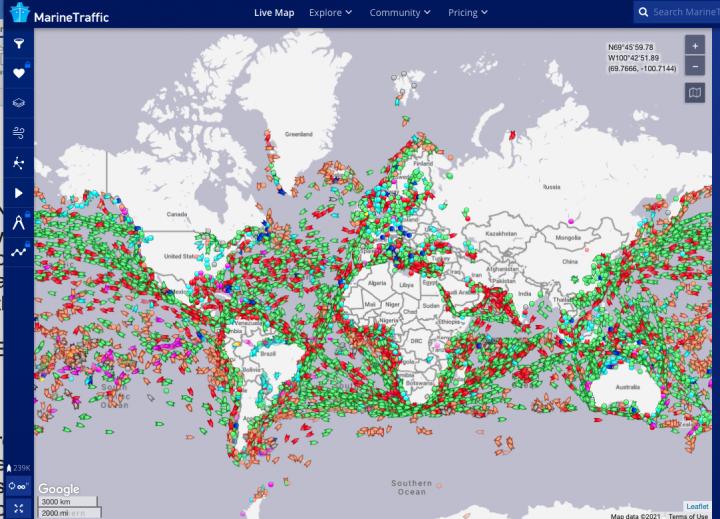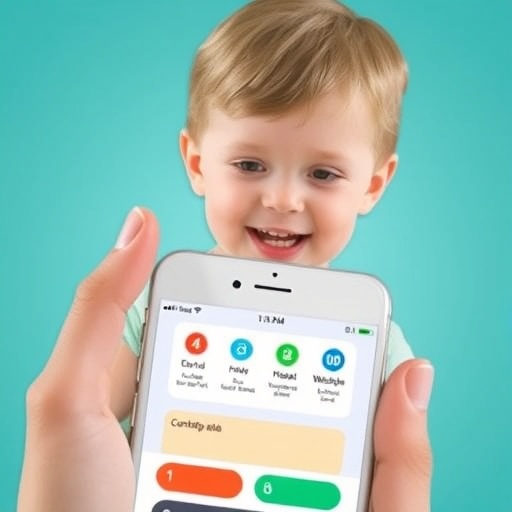New edition of a popular textbook addresses guidance, navigation and control of marine craft.

Credit: Screenshot: Marinetraffic.com
Nearly everything in our daily lives — from the electronic gizmos we all use, to the coffee we drink and the bananas we eat — relies on shipping. Ships worldwide transport roughly 11 billion tons of goods annually, which works out to about 1.5 tons for every person on the planet.
But how do those ships navigate safely on the open ocean or in the crowded quarters of shipping lanes?
The answers to those questions and more can be found in the second edition of a popular textbook that addresses guidance, navigation and control of marine craft. The publisher John Wiley & Sons Ltd. has just released the Handbook of Marine Craft Hydrodynamics and Motion Control, authored by Professor Thor I Fossen, from the Norwegian University of Science and Technology (NTNU).
“The new edition includes autonomous vehicles such as unmanned surface vehicles (USVs) and autonomous underwater vehicles (AUVs) in addition to ships and semisubmersibles,” Fossen said.
The second version of the book also includes new results on intelligent navigation systems and models of autonomous vehicles operating under water and on the surface. It comes with popular software called the Marine Systems Simulator, which is a GitHub repository used around the globe.
Fossen is a cyberneticist, which means he studies all kinds of feedback mechanisms used in the communication and control of ships, airplanes, autonomous robots and drones.
“I got interested in the subject as a PhD candidate. I wrote my PhD thesis on autonomous underwater vehicles in 1991,” he said. “Autonomous vehicles are hot nowadays, so you may say that I was early.”
He is a professor of Guidance, Navigation, and Control at NTNU and is deputy head of NTNU AMOS, the Centre for Autonomous Marine Operations and Systems. He is also in the top tier internationally as a highly cited professor, with more than 32,000 citations to date.
One of the emerging issues facing cybernetics and autonomous marine craft is cybersecurity, Fossen said.
“We are very much concerned with cybersecurity since autonomous vehicles can be hijacked and even used as weapons. Hence, we encrypt all sensor and control signals in the feedback control loops,” he said. “This requires new type of encryption methods since there are large data streams that need to be encrypted in real time.”
Fossen received his MSc in Naval Architecture and his PhD in Engineering and Cybernetics from the Norwegian Institute of Technology, one of NTNU’s predecessors.
Fossen was elected to the Norwegian Academy of Technological Sciences in 1998 and became an Institute of Electrical and Electronics Engineers (IEEE) Fellow in 2016.
“Hardly anyone has left such a huge academic footprint and in marine craft guidance, navigation and control systems and set such standards for vessel management as Thor,” said Asgeir Sørensen, who works closely with Fossen and is head of NTNU AMOS.
The publishers say the handbook offers the latest tools for analysis and design of advanced GNC (Guidance Navigation and Control) systems, and is an extensive study of the latest research in hydrodynamics, guidance, navigation, and control systems for marine craft.
“The text establishes how the implementation of mathematical models and modern control theory can be used for simulation and verification of control systems, decision-support systems, and situational awareness systems. Coverage includes hydrodynamic models for marine craft, models for wind, waves and ocean currents, dynamics and stability of marine craft, advanced guidance principles, sensor fusion, and inertial navigation,” according to a summary on the publisher’s website.
###
Media Contact
Thor I. Fossen
[email protected]




